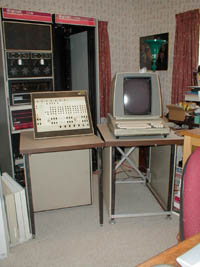
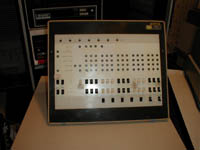
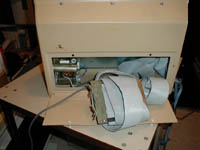
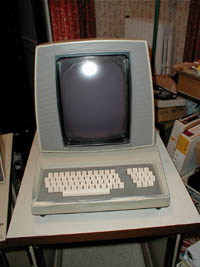
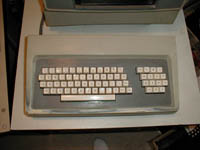
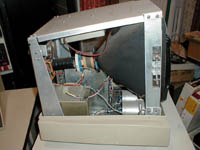
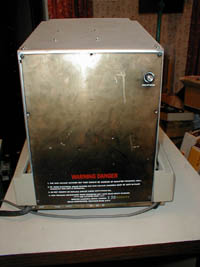
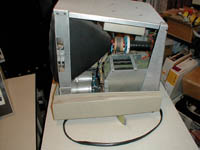
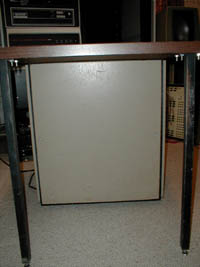
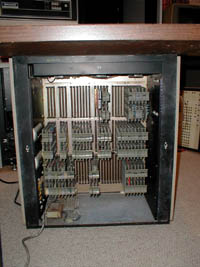
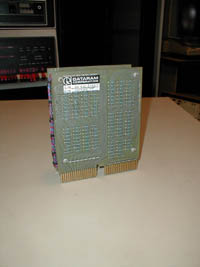
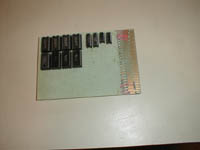
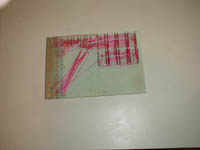
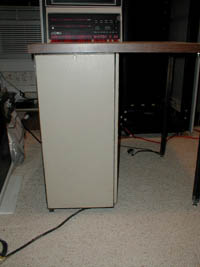
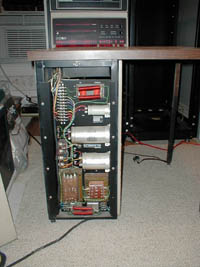
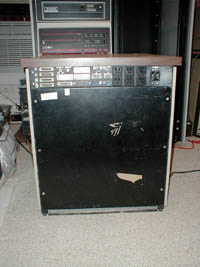
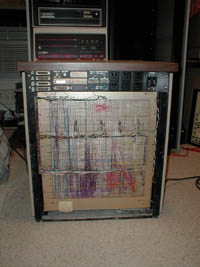
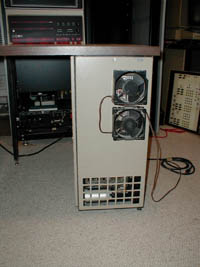
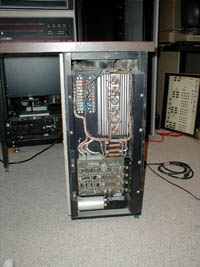
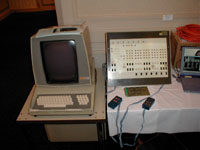
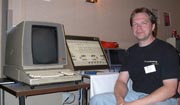
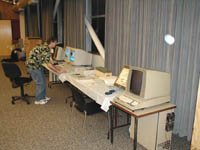
Howard Palmer.
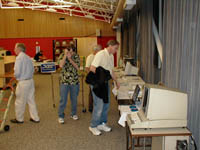
Howard Palmer, Mike Albaugh, and Ken Harrenstien.
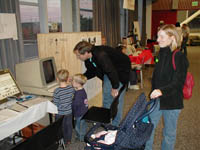
Ken Harrenstien and his family.
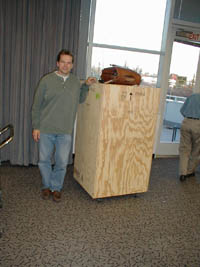
Me and my crated Imlac PDS-1D.
A discussion on putting together a demonstration of Mazewar for VCF7.0 began at the beginning of October 2004 and a number of people provided input, including Greg Thompson, Howard Palmer, Ken Harrenstien, and Charles Frankston. Bruce Damer of the DigiBarn initiated and prompted the effort along the way.
The idea for Mazewar originated at NASA Ames by Steve Colley and Howard Palmer. Steve wrote the first version for a pair of directly connected Imlacs and due to its popularity, it quickly spread to MIT and everywhere that Imlacs were found. The Mazewar setup as run at MIT allowed up to 8 players (Imlacs or robots). The Imlacs were connected (via serial ports) to a PDP-10 running MIT propietary ITS. A server on the PDP-10 managed the communications between the various Imlacs and also contained AI for robots.
While the original NASA Ames listings for Mazewar seems to be lost, Ken was able to resurrect an MIT listing. Howard wrote an Imlac assembler in Java and worked to compile the code. It turns out that the MIT version relied on special modifications to the Imlac hardware which allowed the display processor to address additional memory and also relied on character fonts from another program to be present in memory. Howard re-organized the code and added the fonts into the Mazewar source. About 10 days after the effort began in earnest, Howard mailed me the first binary to try on my Imlac and it came up the first time!
Our plan evolved to connecting the Imlac to a PC (via serial port) and the PC to a Linux box (via ethernet) running the KLH10 PDP-10 emulator running ITS and the Mazewar server with robots. Ken had written the KLH10 emulator some time before and was able to locate a listing for the Mazewar server, which with a bit of OCR and a lot of effort he managed to compile for the emulator. He also made the necessary changes to allow the server to talk to the PC via ethernet.
Howard also wrote a Java application to provide the connectivity (relay) between the Imlac's serial port and the KLH10 Mazewar server over ethernet and a Visual C++ Mazewar application to provide additional game stations for the VCF attendees to use along side the Imlac.
About a week and a half prior to VCF, Harold and I did some late night debugging of his code while communicating over yahoo messenger. Howard would send me a new version of the Mazewar binary for the Imlac, the Windows client, or the relay, I would start up my end, and he would run the Windows client. He would enter the maze from CA while I was here in IN. I would eplain what I was seeing on the Imlac and describe anything that looked unusual. As the version of Imlac code that we were using was from MIT, Howard had never seen it run before and there were a couple of times where I would describe something like the display effect of my being shot to Howard and he would say "Ahh, I wasn't sure what that looked like as I've only looked at the code for it."...
One week prior to VCF, I built a shipping crate for the Imlac and the following Monday I took the 426 lbs. crate (half the weight was in 3/4" plywood)to the frieght company in order to have it at SFO when I arrived on Friday. The shipping went smoothly and the Imlac survived the trip with little difficulty.
Ken and his family came to see the setup at VCF. This was clearly an emotional time for Ken as he apparently spent a great deal of time playing Mazewar on Imlacs while at MIT. He was reported to be the undisputed champion in the maze where his targets would often see that they had been killed by COEURL. Ken said that he never thought he would see Mazewar running on an Imlac again. While at VCF, he took the opportunity to instruct his two sons in the finer points of Mazewar.